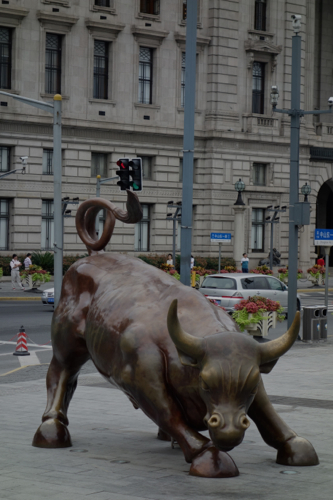Immediately we arrived in Shanghai we went to a Sony service centre. They believed it was the camera at fault but there wasn’t enough time to have it repaired. So it was then off to the Sony Store to see what replacements were available.
After two hours of trying different camera and lens combinations, testing my old lenses with demonstration cameras, and managing to break many of them, we decided to buy a new camera and telephoto lens.
We were only two weeks into our trip and the idea on not having a good camera was unimaginable.
It still wasn’t that straight forward as the store didn’t have the lens in stock, that had to come from the warehouse and in order to get a discount I had to buy the lens first, then the camera. We appreciated the chance to save a few Yen as the price of camera equipment in China is about 20% more than what you can buy online or in the States.
I had to wait a couple of days to get the new camera and lens so we were immediately back into the sightseeing.
The Bund was top of the agenda on our first morning.
This is a great introduction to Shanghai, as it highlights the paradoxes that make up this huge city of over 24 million people.
This is the city where east meets west and the Bund is a showcase for the city’s diversity of style and culture. This riverfront area runs along the Huangpu River facing the Pudong. On the Bund side are many old commercial buildings and banks that were built during the early part of last century. These overlook the Pudong, one of the newest areas in Shanghai, dominated by steel, glass and neon monoliths.
From the Bund we went to Yu Garden, an excellent model of Chinese garden architecture. Built during the reign of Ming Emperor Jaijing in 1559 as a private garden for Pan Yuncuan, an administration commissioner.
The Jiangnan Silk Workshop was yet another ‘opportunity to buy’ we resisted and moved on to the Oriental Pearl Tower and History Museum. This is the Shanghai TV Tower and offers great views of the Bund from the Pudong area. There is a rather strange museum under the building that gives a censored history of Shanghai. This includes models of old motor vehicles, once seen in Shanghai, that have clearly been copied from the originals and scaled down.
In the evening of our first night we took the Metro back down to the Bund and wandered around.
All the old buildings are illuminated, as are the skyscrapers in the Pudong, over the river. In the Bund there is a statue of a bull, no bear, that illustrates the Shanghaise and also the Chinese positive approach to business.
With the entire population of Australia living in the city, you get the feeling that your are not alone.
The Chinese have a rather wonderful, self deprecating, humour when it comes to naming city sites. For instance the clock on the customs house is called Big Chin (short for Chinglish or Chinese/English).
The rain put a dampener on activities for our second day and we were forced to pull out our umbrellas. The same ultra light umbrellas that were our souvenir of Japan.
We visited the Jade Buddha Temple, Xintiandi (also known as the French Concession Area), Nanjing Road and the Tianzifang arts and crafts area. All under the protection of our umbrellas.
The Jade Buddha Temple was founded in 1882 and, not surprisingly, contains two Buddhas carved from jade. These were made in Burma and then sent by sea to Shanghai.
The French Concession area is another link with Shanghai’s western past. The area was a foreign concession from 1849 to 1946 and still retains much of its original charm. There are a large number of European style residences as well as some excellent restaurants.
We returned that night to try one out.
On our last day we made the ninety minute car transfer to Suzhou. This is the city where Marco Polo arrived and not surprisingly named it the Venice of the East. Suzhou is in the Yangtze Delta and on the shores of lake Tai with many canals, stone bridges and beautiful gardens.
It’s a magnet for tourists, home to 11 million Chinese, the richest city in China and one of the fastest growing in the world.
The Grand Canal is the longest canal in the world, with the oldest parts dating back to the 5th century BC.
The Humble Administrator’s Garden is one of the main attractions and regarded by many as one of the finest gardens in China. It, along with other classical gardens in Suzhou, are UNESCO World Heritage Sites.
We also visited the Suzhou Museum, a contemporary building designed by the Chinese-American architect Leoh Ming Pei and completed in 2006. It houses a huge collection of ancient paintings, calligraphy, ceramics and crafts.
We finished our trip to Suzhou with a Grand Canal boat trip, complete with a serenade from the boatman.
Another nod to Venice.










